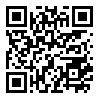GMJ Medicine
eISSN : 2626-3041
Volume 1, Issue 3 (2022)
GMJM 2022, 1(3): 101-107 |
Back to browse issues page
Article Type:
Subject:
History
Received: 2022/04/5 | Accepted: 2022/06/9 | Published: 2022/09/7
Received: 2022/04/5 | Accepted: 2022/06/9 | Published: 2022/09/7
How to cite this article
Mohammadkhani Orouji F, Saeid Z. Medical Stability of Color Effects in Eyes. GMJM 2022; 1 (3) :101-107
URL: http://gmedicine.de/article-2-206-en.html
URL: http://gmedicine.de/article-2-206-en.html
Download citation:
BibTeX | RIS | EndNote | Medlars | ProCite | Reference Manager | RefWorks
Send citation to:



Rights and permissions
BibTeX | RIS | EndNote | Medlars | ProCite | Reference Manager | RefWorks
Send citation to:
Authors
F. Mohammadkhani Orouji *1, Z. Saeid2
1- Department of Psychology, Abarkouh Branch, Islamic Azad University, Abarkouh, Iran
2- Department of Psychology, University of Bangladesh University (BU), Bangladesh
2- Department of Psychology, University of Bangladesh University (BU), Bangladesh
Abstract (398 Views)
Intoduction: The retina, like other parts of the body, gets tired when it is in opposite positions, and in the meantime, red light makes the eye more tired than green and blue. If we stare at a small colored spot for a while and then look at the white pages instead of the colored spot, we will see the complementary color of the colored spot. In this way, the eye that is tired of the green color will see the color of the magenta instead of green, and if the spot is red, the eye will see the cyan when changing. The view of two-colored areas adjacent to each other changes under different conditions, for example, yellow and red on a dark background are much more visible than on a light background. This phenomenon is reversed for green and blue.
Conclusion: A white spot appears on the yellow background as blue and if it is on the red background green and finally on the green background a pale pink. During the day, eye sensitivity to colors will vary depending on the food a person consumes. For example, eating carrots enhances vision in low light.
Conclusion: A white spot appears on the yellow background as blue and if it is on the red background green and finally on the green background a pale pink. During the day, eye sensitivity to colors will vary depending on the food a person consumes. For example, eating carrots enhances vision in low light.
References
1. Kannan K, Jain SK. Oxidative stress and apoptosis. Pathophysiology. 2000;7(3):153-63. [Link] [DOI:10.1016/S0928-4680(00)00053-5]
2. Kapur I, Macdonaald RL. Rapid seizure-induced reduction of benzodiazepine and zn2+ sensitivity of hippocampal dentate granule cell GABAA receptors. J Neurosci. 1997:17(19);153-4. [Link] [DOI:10.1523/JNEUROSCI.17-19-07532.1997]
3. Kaputlu I, Uzbay T. l-Name inhibits pentylenetetrazole and strychnine-induced seizures in mice. Brain Res. 1997;753(1):98-101. [Link] [DOI:10.1016/S0006-8993(96)01496-5]
4. Ravi K, Rajasekaran S, Subramanian S. antihyperlipidemic effect of eugenia jambolana seed kernel on streptozotocin-induced diabetes in rats. FCT. 2005;43(9):1433-9. [Link] [DOI:10.1016/j.fct.2005.04.004]
5. Kasper K, Braunwald E, Fauci A, Houser S, Longo D, Jamson JL. Harisons Principale of Internal medicine. 16th ed. New York: MC Grow; 2002. [Link]
6. Kaviarasan K, Arjunan MM, Pugalendi KV. Lipid profile, oxidant-antioxidant status and glycoprotein components in hyperlipidemic patients with/without diabetes. Clin Chim Acta. 2005;362(1-);49-56. [Link] [DOI:10.1016/j.cccn.2005.05.010]
7. Khaksari M, Mahmoudi M, Ferdowsi F, Asadi Karam G, Shariati M. the effect of trifluoperazine on increased vascular permeability in an experimental model of chronic diabetic rat. J Physiol Pharmacol. 2005;9(1):47-55. [Persian] [Link]
8. Khine H, Weiss D, Graber N, Hoffman RS, Esteban-Cruciani N, Avner JR. A cluster of children with seizures caused by camphor poisoning. Pediatrics. 2009;123(5):1269-72. [Link] [DOI:10.1542/peds.2008-2097]
9. Kilian M, Freg HH. Central monoamines and convulsive thresholds in mice and rats. Neurpharmacology. 1973;12(7):681-92. [Link] [DOI:10.1016/0028-3908(73)90121-4]
10. King H, Aubert RE, Herman WH. Global burden of diabetes, 1995-2025: Prevalence, numerical estimates, and projections. Diabetes Care. 1998;21(9):1414-31. [Link] [DOI:10.2337/diacare.21.9.1414]
11. Janusz W, Kleinork Z. The role of the central serotonergic system in pilocarpine-induced seizures: Receptor mechanisms. Neurosci Res. 1989;7(2):144-53. [Link] [DOI:10.1016/0168-0102(89)90054-0]
12. Knekt P, Beunanen A, Jarvinen R, Seppane R, Helio VM, Aroma A. antioxidant vitamin intake and coronary mortality in a longitudinal population study. Am J Epidemiol. 1994;139(12):1180-9. [Link] [DOI:10.1093/oxfordjournals.aje.a116964]
13. Kumarasamy YY, Nahar L, Byres M, Delazar A, Sarker SD. The assessment of biological activities associated with the major constituents of the methanol extract of 'wild carrot' (Daucus carotaL.) seeds. J Herb Pharmacother. 2005;5(1):61-72. [Link] [DOI:10.1300/J157v05n01_07]
14. Kuzuya T, Nakagawa S, Satoh J, Kanazawa S, Iwamota Y, Kobayashi M, et al. Report of the Committee on the classification and diagnostic criteria of diabetes mellitus. Diabetes Res Clin Pract. 2002;55(1):65-85. [Link] [DOI:10.1016/S0168-8227(01)00365-5]
15. Lee J, Sparrow D, Vokonas PS, Landsberg L, Weiss ST. Uric acid and coronary heart disease risk: evidence for a role of uric acid in the obesity-insulin resistance syndrome: The normative aging study. Am J Epidemiol. 1995;142(3):228-94. [Link] [DOI:10.1093/oxfordjournals.aje.a117634]
16. Lehto S, Niskanen L, Ronnemaa T, Laakso M. Serum uric acid is a strong predictor of stroke in patients with non-insulin-dependent diabetes mellitus. Stroke. 1998;29(3):635-9. [Link] [DOI:10.1161/01.STR.29.3.635]
17. Loh KC, Leow MK. Current therapeutic strategies for type 2 diabetes mellitus. Ann Acad Med Singap. 2002;31(6):722-9. [Link]
18. Low PA, Nickander KK, Tritschler HJ. The roles of oxidative stress and antioxidant treatment in experimental diabetic neuropathy. Diabetes. 1997;46(2):538-42. [Link] [DOI:10.2337/diab.46.2.S38]
19. Macdonald PE, Wheeler MB. Voltage-dependent K+ channels in pancreatic beta cells: Role, regulation and potential as therapeutic targets. Diabetologia. 2005;46:1046-62. [Link] [DOI:10.1007/s00125-003-1159-8]
20. Majumdar UK, Grupta M,. Datro VJ. Studies on antifertility of methanolic extract of Daucus carota Linn. seeds. Seeds Indian J Nat Prod. 1998;14(22):33-7. [Link]









